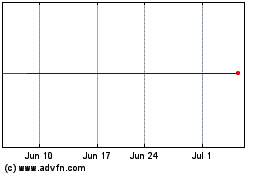Harris Corporation is Twice Honored at 60th Annual Technology & Engineering Emmy(R) Awards
January 08 2009 - 10:09AM
PR Newswire (US)
Harris Broadcast Technology Recognized for Enhancing Consumer
Viewing Experience CINCINNATI and LAS VEGAS, Jan. 8
/PRNewswire-FirstCall/ -- Harris Corporation (NYSE:HRS), an
international communications and information technology company,
received two awards from the National Academy of Television Arts
and Sciences (NATAS) at the 60th Annual Technology &
Engineering Emmy(R) Awards ceremony that took place January 7,
2009, at The Venetian Hotel in Las Vegas. This marks the eighth
Emmy(R) that the company has received for introducing technology
that enhances broadcasters' capabilities and the consumers' viewing
experience. During the event, which was held on opening night of
the International Consumer Electronics Show (CES), Harris was
presented with one Emmy(R) for introducing a communications
protocol to control video servers for broadcast television and a
second for inventing a method to combine analog and DTV signals on
adjacent frequencies within a single antenna. The first award
honors Harris for Video Disk Communications Protocol(TM)
(VDCP(TM)), a proprietary, serial communications protocol based on
the RS-422 standard. Originally developed by Louth Automation,
which Harris acquired in 1999, VDCP was rapidly adopted by
virtually all server and automation manufacturers due to its
ability to provide a simple, proven and reliable means of
controlling video servers for broadcast television. Harris has
maintained its commitment to open protocols with its leading role
in later developments including Programming Metadata Communication
Protocol (PMCP) and Broadcast eXchange Format (BXF). "Consolidation
and centralized control of operations are key objectives for
today's broadcaster, which lends added significance to
standards-based protocols," said Tim Thorsteinson, president of
Harris Broadcast Communications. "Even with the recent
proliferation of proprietary, vendor- specific protocols, VDCP
still stands as the de facto standard. Essentially, any broadcaster
who has ever needed automation control of video file servers has at
some time or other used VDCP." Harris was also recognized for its
invention "Combining Adjacent TV Channels for Transmission by a
Common Antenna," which is a method of "space combining" analog and
DTV signals on adjacent frequencies within a single antenna. The
ability to transmit multiple analog and DTV channels from a single
antenna with nearly identical radiation patterns reduces costs for
the broadcaster by eliminating the need for separate, expensive
antennas for analog and DTV channels. The invention also simplifies
engineering complexity by consuming less tower space and
maintaining signal isolation between the analog and DTV
transmitters. The technology was invented by the late Emmy(R)
award-winning inventor Robert J. Plonka of Harris Broadcast
Communications. "Many DTV broadcasters using this technology today
would have otherwise been forced to replace their antennas and
towers prior to supporting DTV services," said Thorsteinson. "The
ability to use a common antenna to simultaneously transmit analog
and DTV signals has allowed many broadcasters to add adjacent DTV
channels to existing transmission lines and antenna systems. This
presents a far more cost- and time-efficient solution for local
broadcasters while maintaining the integrity and quality of their
broadcasts." Launched in 1948, Technology and Engineering Awards
honor development and innovation in broadcast technology and
recognize companies, organizations and individuals for
breakthroughs in technology that have a significant effect on
television engineering. Harris Broadcast Communications offers
products, systems and services that provide interoperable workflow
solutions that span the entire media delivery chain. The Harris
ONE(TM) solution brings together highly integrated and
cost-effective products that are ideal for emerging media business
models and for customers upgrading media operations to digital and
high-definition services. About The National Academy of Television
Arts & Sciences The National Academy of Television Arts &
Sciences (NATAS) is a professional service organization dedicated
to the advancement of the arts and sciences of television and the
promotion of creative leadership for artistic, educational and
technical achievements within the television industry. It
recognizes excellence in television with the coveted Emmy Award for
News & Documentary, Sports, Daytime Entertainment, Daytime
Creative Arts & Entertainment, Public & Community Service,
Technology & Engineering, and Business & Financial
Reporting. Regional Emmys are given in 19 regions across the United
States. Beyond awards, NATAS has extensive educational programs
including National Student Television and its Student Award for
Excellence for outstanding journalistic work by high school
students, as well as scholarships, publications, and major
activities for both industry professionals and the viewing public.
For more information, please visit the website at
http://www.emmyonline.tv/ . About Harris Corporation Harris is an
international communications and information technology company
serving government and commercial markets in more than 150
countries. Headquartered in Melbourne, Florida, the company has
annual revenue of $5.4 billion and 16,000 employees -- including
nearly 7,000 engineers and scientists. Harris is dedicated to
developing best-in-class assured communications(R) products,
systems, and services. Additional information about Harris
Corporation is available at http://www.harris.com/ . Emmy(R) is a
registered trademark of The National Academy of Television Arts and
Sciences DATASOURCE: Harris Corporation CONTACT: David Cohen of
Harris Broadcast Communications, Director, Marketing
Communications, +1-610-327-6483, ; or Robin Hoffman of Pipeline
Communications, +1-973-746-6970, Web site: http://www.harris.com/
http://www.emmyonline.tv/
Copyright
Harris (NYSE:HRS)
Historical Stock Chart
From May 2024 to Jun 2024

Harris (NYSE:HRS)
Historical Stock Chart
From Jun 2023 to Jun 2024
